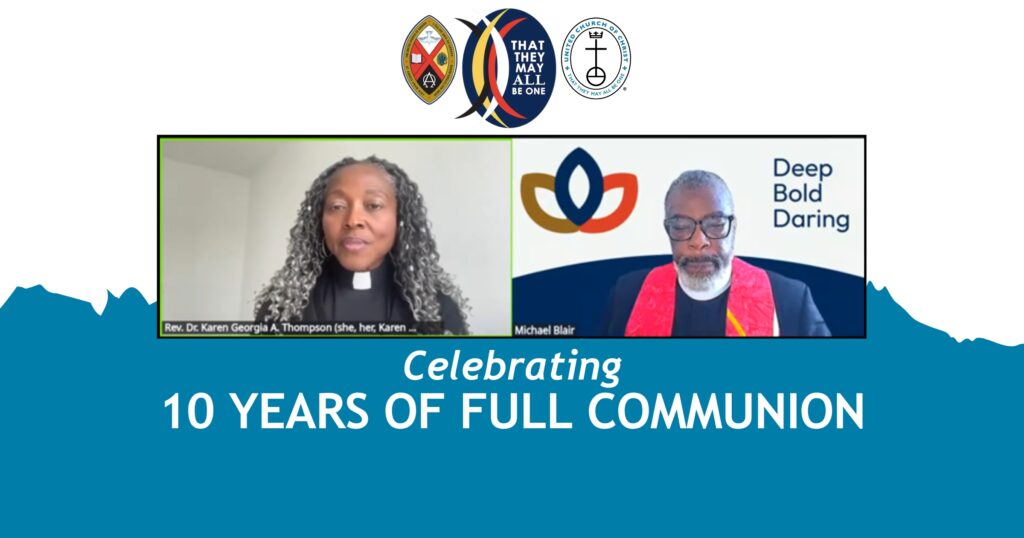COVID-19 myths and facts: children, flu and more
United Church of Christ – Wider Church Ministries
Humanitarian Development Team
Coronavirus (COVID-19) Daily Briefing
Barbara T. Baylor, MPH – Temporary Health Liaison
Myths and Facts about COVID-19: children, flu and more
COVID-19 has become a part of our daily life. There is so much information about the virus, yet some of what we are hearing is rumors and misinformation. According to Johns Hopkins Medical Center, they have been misquoted in articles and on social media, spreading information that is just not true. They say the best way to spot a rumor and misinformation is to consult their Coronavirus (COVID-19) Information and Updates resource center for the most up-to-date information.
They reported that you can also spot a rumor by following these guidelines, before accepting or further spreading incorrect information:
- Use trusted sources, such as official government or healthcare websites and social media channels.
- Evaluate other information from the source, including links and their sources, to see if it appears reliable.
- Search other credible resources to see if they are sharing similar information.
Some of the current rumors circulating include:
Children can’t get or transmit the virus. False. The American Academy of Pediatrics reported that as of August 6, 2020, the cumulative number of child COVID-19 cases in the United States was 380,174, with children representing 9.1 percent of all cases. That’s 501 cases per 100,000 children in the population. The August 6 tally represented a 90 percent increase in new child cases over July 9 (200,184).
COVID-19 is just like the flu. False. Kentucky News wrote on August 10 that it’s true that there are similarities between the flu and COVID-19, but they are two separate viruses. Both can cause mild to severe respiratory illness and both can be transmitted at least one day before symptoms start to show.
Even with the government imposing measures to limit the spread of the novel coronavirus, more than 158,000 Americans have died from COVID-19 to date. In comparison, between October 1, 2019, and April 4, 2020, the Centers for Disease Control and Prevention estimated between 24,000 and 62,000 flu deaths.
The pneumonia and flu shots prevent you from getting COVID-19. False. The Mayo Clinic says there are currently no proven vaccines to prevent infection with the COVID-19 virus. Vaccines against pneumonia, such as the pneumococcal vaccine, don’t provide protection against the COVID-19 virus. The flu shot also won’t protect you against the COVID-19 virus. It is hoped that the vaccines in trial for COVID-19 will successfully put an end to this pandemic.
Hot or cold temperatures can stop transmission. False. According to science, exposure to the sun or to temperatures higher than 77 F (25 C) doesn’t prevent the COVID-19 virus or cure COVID-19. You can get the COVID-19 virus in sunny, hot and humid weather. Taking a hot bath also can’t prevent you from catching the COVID-19 virus. Your normal body temperature remains the same, regardless of the temperature of your bath or shower. Cold weather and snow also can’t kill the COVID-19 virus.
Fake “Face Mask Exemption” cards and flyers claiming that the bearer is exempt from mask-wearing regulations have shown up in some areas. The cards, which some people have purchased online, may have official-looking logos or government insignias on them. They claim that the person carrying them has a physical or mental condition covered by the Americans with Disabilities Act (ADA) that makes them unable to wear a face mask or covering.
Thermal scanners CANNOT detect COVID-19. The World Health Organization confirms that thermal scanners are effective in detecting people who have a fever (i.e. have a higher than normal body temperature). They cannot detect people who are infected with COVID-19. There are many causes of fever. Call your healthcare provider if you need assistance or seek immediate medical care if you have fever.
Whatever information we hear, no matter how many times we hear it, doesn’t necessarily make it true. The Mayo Clinic reminds us to avoid unsubstantiated acts by following known facts and well-established public health guidance. Avoid large events and mass gatherings. Stay home as much as possible. If you go out avoid contact with others: Keep a safe distance of at least 6 feet.
Wash hands with soap and water or use sanitizer that has an 80 percent alcohol base. Wash surfaces often with a germ-killing solution. Cover your eyes and nose with a cloth covering and your eyes with a covering that is tight enough to keep anything from getting to your eyes, from over, under, or on the sides. And avoid touching your eyes, nose or mouth with unwashed hands.
Sources: Johns Hopkins Medicine, CDC, WHO, and Mayo Clinic websites.
For information on your local area visit the CDC website: State listings pages.
Today’s briefing is by guest writer the Rev. Phyllis Richards, Acting Team Leader, Global H.O.P.E., which is part of UCC Wider Church Ministries.
COVID-19 Daily Briefing Archives
See Also: Racial and Ethnic Disparities – Information for Action Archive
Related News
A Moment of Silence
The weekend news was alarming. Two students shot and killed with 9 injured at Brown University...
Read MoreIn hope-filled worship service, UCC and United Church of Canada celebrate full communion past and future
On Saturday, Dec. 13, many from the United Church of Christ (UCC) and the United Church of...
Read More‘A Gift of God to the World:’ Christmas greetings from the General Minister and President
As Christmas quickly approaches, UCC General Minister and President/CEO the Rev. Karen Georgia...
Read More


